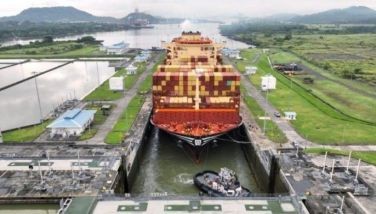Can we still build a steel industry?


The answer to the question depends on how optimistic or pessimistic the person answering the question is.
According to the Philippine Iron and Steel Institute (PISI), currently led by its president Ronald Magsajo, our country is still largely import dependent when it comes to steel products even if we have some capability to produce rebars and angle bars.
The Philippines’ continued dependence on imported steel, despite its earlier attempt in the 1980s to establish an integrated steel manufacturing industry through the National Steel Corp., has resulted in stunted growth particularly in the manufacturing sector.
In a recent briefing with the Monday Circle, a group of media people and market analysts, Magsajo pointed out that the country still has some capability to manufacture rebars as well as angle bars that are classified as midstream steel production using billets manufactured from scrap metal.
The only active midstream steel manufacturer in the country is SteelAsia Manufacturing Corp. owned by Benjamin Yao.
Based on PISI data as of 2021 to 2022, Magsajo said local steel billet production using scrap metal was at 1.55 million metric tons and import volume was at 2.46 million MT or an import dependence of 61 percent.
Ideally, steel billet production should be made from iron ore to ensure a strong quality, Magsajo said. However, the production of steel billets would require a blast furnace, investments for which the Philippines continues to look for.
Local rebar production, Magsajo cited, was at 3.76 million MT while importation was recorded at 20,000 as of 2021 to 2022. Unfortunately, however, the Philippines is also faced with the problem of smuggled rebar imports.
Rebar is short for reinforcing bar and is known as such when massed as reinforcing steel or steel reinforcement. It is a steel bar used as a tension device in reinforced concrete and reinforced masonry structures to strengthen and aid the concrete under tension.
Local angle bar production as of the 2021 to 2022 data was placed at 367,997 MT, with 60,000 MT imported.
Angle bars, also known as “L bracket,” is a metal bracket used to provide stability to structures. It is often installed within or along the edges of beams and other platforms that may not have enough capacity to carry the expected load.
Rebar and angle bar are used for construction activities.
Other vital steel products such as section and sheet piles, rails, wire rods, steel plates, hot-rolled sheets and strips, cold-rolled sheets and strips and tinplates are all imported.
There is still some production of galvanized sheets amounting to 96,098 MT as of 2021 to 2022, but importation is higher at 954,508 MT for an import dependence of 91 percent which, Magsajo warns, puts local galvanizers at the brink of collapse.
PISI data for that same period also showed that local production of other metallic-coated sheets amounts to only 168,836 MT as compared to imports of 828,059 MT for an import dependence of 83 percent.
Likewise, pipes and tubes production locally only amounts to 279,510 MT as opposed to imports of 466,970 MT, or an import dependence of 63 percent.
The Philippines, thus, Magsajo said, is largely import dependent, with more than 60 percent of the country’s billet requirements imported and, except for rebar, 86 percent import dependent on steel products.
This means that the development of downstream manufacturing of such items as machinery parts, wire, cables fasteners, spring, bearing and chains as well as everyday items to name a few, and other industries is hampered by the lack of domestically produced steel products.
The biggest threat to the country’s steel sector is the Chinese steel manufacturers who are already experiencing over capacity in their production, and according to the World Steel Association, accounts for over 53 percent of global crude steel production in 2023, followed by India and the EU-27, each with seven percent.
Magsajo, though, remains optimistic that the Philippines has the capability to grow its steel sector based on the government’s Philippine and Iron Steel Roadmap that envisions the country being able to supply up to 70 percent of the supply of tonnage of steel consumption or up to 10.1 million metric tons by the year 2030.
The kicker, though, Magsajo points out, “historically, it is the government that starts the steel industry...it needs a strong push from the government to invest first and then once it starts improving that is when the private sector comes in.”
But, Magsajo admits, “I don’t think the government today will do that, so it is left up to the private sector.”
The government, however, during the term of former president Ferdinand Marcos Sr., had attempted to establish an integrated steel manufacturing industry that eventually failed for a number of reasons.
That in itself is another story that will help answer if we can or should try to build our own steel manufacturing industry.
(To be continued)
- Latest
- Trending



























